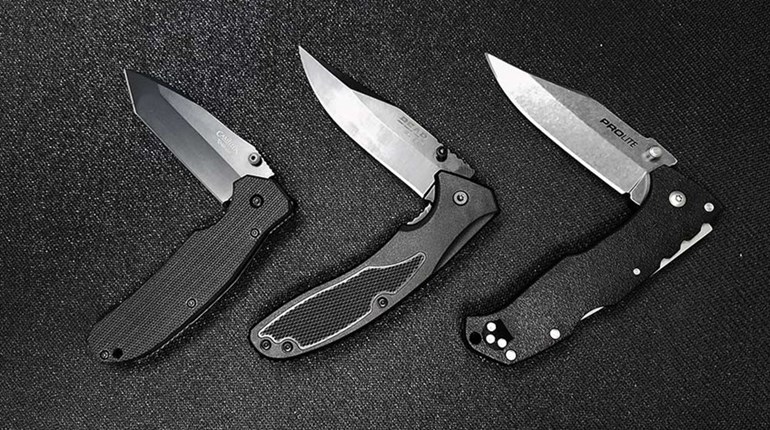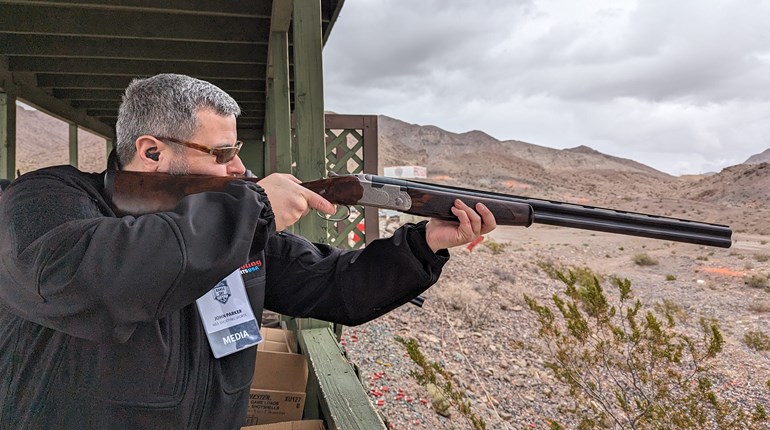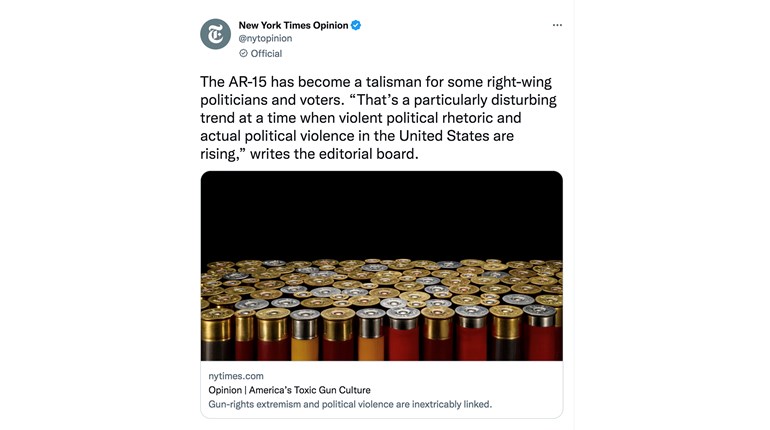
Depending on where you live, you may be restricted to using shotguns for the upcoming big-game seasons...and this means that shooting "slugs" through your shotgun is the way to go. Shooting slugs is easy, but accuracy is not guaranteed. The secret to accuracy is finding the right gun and slug combination, preparation and then practice--a lot of practice. You may do well with a standard shotgun if you use appropriate ammunition and invest in plenty of range time. There are also shotguns available with fully rifled barrels and/or hardy scopes designed for slug guns, although this is a more expensive route.
What to Know About Slug Design
A shotgun slug is one of three basic designs. The traditional rifled slug, often referred to as the Foster-style, is the most popular. Invented in the U.S. by Karl Foster in 1931, it is a hollow cone of lead with a round nose, with raised fins or “rifling” on the sides. The fins compress to the diameter of a smoothbore barrel, making a tighter fit in the barrel.
The sabot slug, a more recent design, is designed for a fully rifled barrel. The sabot is a wad of a sort, enclosing the slug or projectile, which in some cases is a polymer-tipped bullet or hollowpoint. After you take the shot, the sabot spins off while the slug continues downrange.
The third design is the oldest design, the Brenneke slug, invented by Wilhelm Brenneke in Germany in 1898. A pointed slug with fins, it uses a tailing device or “rear” for stability. The “rear” slides into the slug on impact.
What to Know About Slug Brands
One brand of ammunition will be more accurate in your gun than another brand, due to variances in bore diameter, which is common with shotgun barrels. Each manufacturer has a slightly unique bore diameter, which is why ammunition manufacturers aren't able to produce a one-size-fits-all slug. Accuracy suffers from any looseness in fit, no matter how slight, because it causes a slug to wobble on its way out of the bore. Wobbling means less stability, resulting in less accuracy.
Narrowing your search for accurate ammunition starts with the barrel. If you are shooting smoothbore with a fixed choke, avoiding sabot slugs is a good idea. Cylinder bore is the most appropriate barrel, however, an improved cylinder bore is often used for convenience. Check with the slug manufacturer before shooting a slug through tighter chokes such as a modified or full choke.
Your expected range of accuracy for any box of slugs you grab in a store should be about 50 yards. This is an average range for the typical field gun with a smooth barrel and bead sight, shooting any brand of ammunition picked at random. Testing several brands of ammunition may help you find a slug that shoots well out to 70 yards; this is an above-average range for a standard shotgun with no modifications.
If you're using a fully rifled barrel, sabot slugs are a good choice. Foster slugs can be fired through a rifled barrel, and hunters who shoot rifled slugs through their rifled barrels claim to get good to excellent results. However, the lead fouling can be severe, and requires more frequent cleaning to maintain the level of accuracy.
Rifling stabilizes a slug through contact with the sabot. The sabot falls away from the slug after leaving the barrel. A saboted slug maintains accuracy at a longer range--120 yards is not too much to ask from a finely tuned slug gun with a rifled barrel and scope, and some deer hunters feel confident out to 150 yards. That said, not all slugs may carry sufficient energy to take deer at that range, so please check the manufacturer’s ballistics, often found on the box.
A Brenneke-style slug may be designed for the smoothbore or the rifled barrel, but not both. The manufacturer’s website will often post appropriate use of its products or include in a FAQ section.
What to Know About Choke Tubes
Modern smoothbore barrels come with removable choke tubes. Choke tubes add the ability to shoot various forms of shot, including slugs. George Trulock, a pioneer of the choke tube industry, began manufacturing choke tubes in 1981.
Trulock believes Foster and Brenneke designs are suitable for use with open constriction choke tubes such as cylinder, skeet or improved cylinder and will typically shoot 3-inch groups at 50 yards. He agrees some slug loads will give better accuracy than others in your specific shotgun, meaning that you'll need to do some experimenting. When shooting slugs, he prefers skeet chokes with 0.005 constriction. Concerning sabot slugs, he feels a fully rifled barrel is needed in order to stabilize the bullet--therefore, sabots are not suitable for use with choke tubes, smooth or rifled.
What to Know About Rifled Tubes
A rifled-choke tube can improve accuracy. I achieved hunting accuracy out to 70 yards with a bead for a sight, using a solid rest and holding a firm grip on the forearm. Not every slug brand did this, nor did every brand of rifled choke tube.
Finding the proper ammunition to fit your barrel cannot be taken for granted, regardless of the choke tube. If you are not happy with the accuracy from a brand of ammunition, a rifled-choke tube is just another option that you have to potentially increase accuracy a bit farther than smoothbore distances. Accuracy from a couple of inches of rifling in a choke tube is not comparable with the accuracy of a fully rifled barrel, but rifled choke tubes are a less expensive option than a brand-new fully rifled shotgun if you're going to shoot slugs at close range.
The rifled-choke tubes I have used were self-tightening, so a lubricant is recommended on the choke tube threads. An automotive antiseize compound works. Avoid overtightening the tube with a wrench; hand tight worked for me on the extended tubes. A rifled tube inserted dry and then overtightened may need a trip to a gunsmith to be removed.
Ballistic information, such as velocity, can help your search for accurate slugs. You may find greater accuracy with moderate velocity rather than with the highest velocity. The highest velocity slug may fly too fast for a rifled choke tube.
Sighting-In For Accuracy
Accurate shooting requires more than hand and eye coordination. You have to use proper form. If you're bench shooting, this means a solid rest at two points, the forearm and buttstock. Without a solid, two-point rest, your groups will be inconsistent. Another source of error is not holding down on the forearm. Slug gun shooters often hold a gun tight to the shoulder, but rarely pull down on the forearm at the same time. If the forearm is not held down, any upward movement will affect accuracy. When you pull the trigger, that slug gun is coming back at you, the recoil will push it up as well. If you are not holding down on the forearm, it can affect accuracy.
Sighting-in too far away is a common mistake. No matter what gun or ammunition you use, start at 50 yards. The average slug sighted-in approximately 2¼ inches high at 50 yards will hit dead-on at 100. Sighting-in at 50yards negates the effects of the wind. If you are not using a scope, sighting-in past 50 can be a waste of ammunition, but it is good practice to shoot at your maximum effective range. Once your gun is sighted in, practice at greater distances to improve your skill.






































